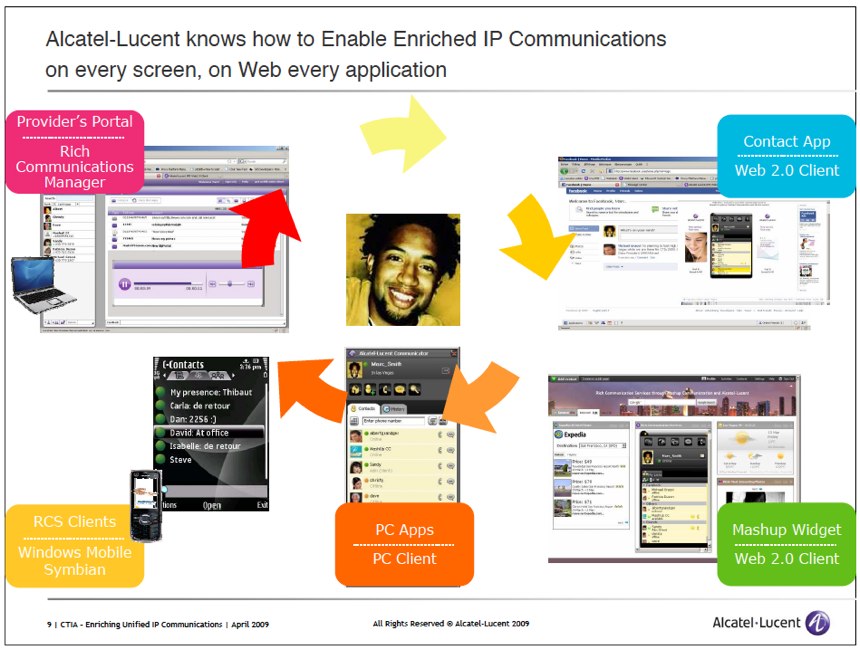Alcatel Lucent to offer Phone 2.0 features

Alcatel-Lucent has designed a new interface that promises to bring your telephony experience - whether landline, mobile or IP - further into the 21st Century. Its new Rich Communications Manager, being unveiled today, is designed to do everything we've come to expect from cell phones today - things like text messaging and photo sharing - and then some.
The news comes on the heels of the debut of Google Voice, a virtual phone service that was designed around Google's acquisition of Grand Central. Google Voice - when it's finally opened to the general public in the coming weeks - allows users to obtain a virtual phone number that can be programmed to place and receive calls via any phone and also manage things like voicemail, contacts and even messaging from the Web portal.

The Alcatel-Lucent system is designed to work with and enhance existing infrastructure already in place so companies such as AT&T, Vonage or T-Mobile, for example, can add value to their services without building a new system from scratch.
The company noted that the technology, built on an open API, has the capability to do things that the service providers might not be ready for. Traditional carriers are concerned with preserving the integrity of the service, especially those in the landline business who boast always-connected service. Once they become comfortable with the new services and customers start asking for more, the technology will be ready.
This announcement also follows the release of the Verizon Hub, a touch-screen base station for a home landline that ties into the mobile network by incorporating SMS, maps-and-directions, visual voicemail and more.
Cell phones have already done their part to cannibalize the landline phone business - especially for the younger customer base that has long been comfortable with a cell phone in hand. Whether an upgrade of new features on an old system will be appealing to a large audience has yet to be seen.